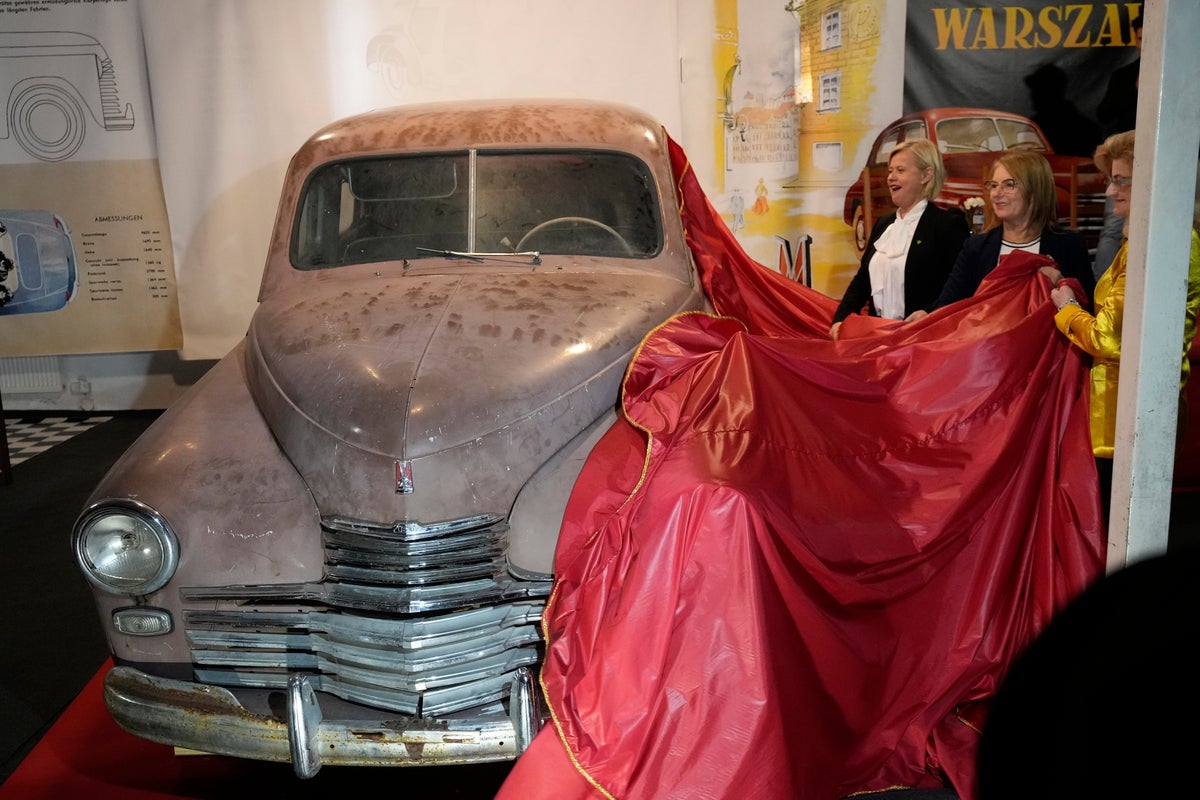The first car made during Soviet-era Poland goes on display 73 years later

Your support helps us to tell the story
Read more
From reproductive rights to climate change to Big Tech, The Independent is on the ground when the story is developing. Whether it’s investigating the financials of Elon Musk’s pro-Trump PAC or producing our latest documentary, 'The A Word’, which shines a light on the American women fighting for reproductive rights, we know how important it is to parse out the facts from the messaging.
At such a critical moment in US history, we need reporters on the ground. Your donation allows us to keep sending journalists to speak to both sides of the story.
The Independent is trusted by Americans across the entire political spectrum. And unlike many other quality news outlets, we choose not to lock Americans out of our reporting and analysis with paywalls. We believe quality journalism should be available to everyone, paid for by those who can afford it.
Your support makes all the difference.CloseRead moreClose
The very first car produced in Soviet-era Poland after World War II went on display Friday near Warsaw after it was tracked down in Finland during decades of searching and acquired after years of negotiations.
The chunky 1951 Warszawa M-20 bears the serial number 000001 it had when it left the FSO Passenger Car Factory in Warsaw on Nov. 6 of that year, exactly 73 years ago. It is a relic of Poland’s post-war subordination to communist-ruled Soviet Union.
“We are extremely proud because now we count among the very few people in the world who have retrieved the very first vehicles of the series made in their countries,” said Zbigniew Mikiciuk, a co-founder of the private museum in Otrebusy.
The car was first given to the Soviet army marshal Konstantin Rokossovsky, who served as Poland’s defense minister after the war to seal the country’s dependency to Moscow. It eventually was discovered in the possession of the family of Finnish rally car driver Rauno Aaltonen, though the car’s history in between remains unclear, Mikiciuk said.
It took more than two years of negotiations to obtain the vehicle from the Finnish owners, he said.
The car’s original light color has been painted over with a shade of brown that was fashionable in the 1970s and bears marks of use that the museum has preserved, but it is still „holding together”and is “cool” despite its age, Mikiciuk said.
The now-defunct FSO factory intensively sought the original model during the 1970s in hopes of using it to mark an anniversary. The company even offered a new car in exchange for it, but to no avail.
The FSO factory was originally built to make Italian Fiat cars in the late 1940s, but Soviet leaders in Moscow objected to the ties with a Western company during the Cold War. They ordered production to be based on the Soviet Union’s Pobeda (Victory) cars, with Moscow providing the technology and the production lines.
The car now joins the museum’s many historic vehicles, including a 1928 U.S.-made Oakland brought to Poland before the war by a doctor’s family and a 1953 Buick that belonged to Poland’s communist-era Prime Minister Jozef Cyrankiewicz. The former leader brought the car to Poland via the Netherlands to avoid a direct connection to the U.S. during the Cold War.
The museum also displays a Volvo that was used by Poland’s communist leader, Gen. Wojciech Jaruzelski, known for having imposed martial law in 1981.
“We have been doing this for more than 50 years and we are not collecting cars you can see in the street but cars that have their history, their soul and their legend,” Mikiciuk said.
The museum owners hope that by displaying the initial Warszawa M-20 they can encourage members of the public to come forward and fill in more details of its history.






